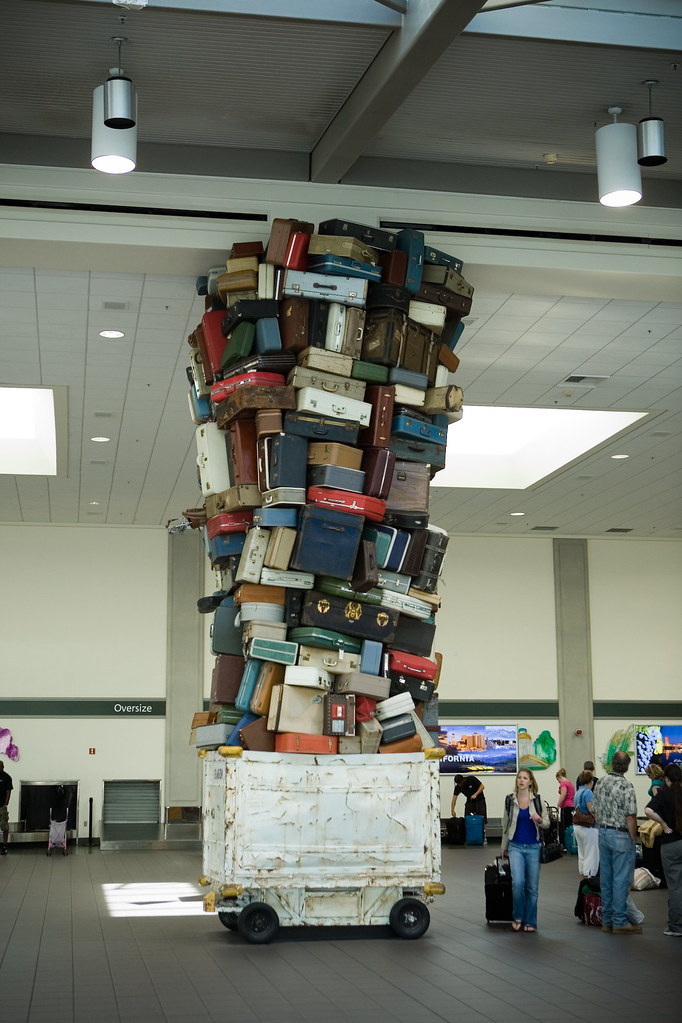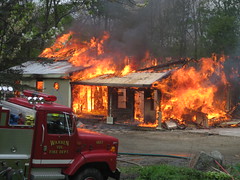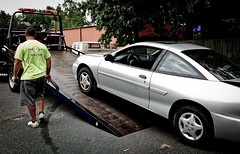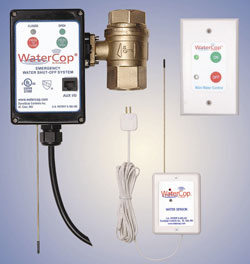To this list, I would add:
Shop with an independent insurance agency who can shop for you.
Commercial and Personal Insurance Brokers
To this list, I would add:
Shop with an independent insurance agency who can shop for you.
 While most auto policies cover rental car use, there are limitations. This article mentions some. Another is loss of use. The rental car company has the right to charge for the time that a vehicle is out of commission due to an accident. Some auto insurance policies cover this and others don’t.
While most auto policies cover rental car use, there are limitations. This article mentions some. Another is loss of use. The rental car company has the right to charge for the time that a vehicle is out of commission due to an accident. Some auto insurance policies cover this and others don’t.
 Wildfire season isn’t limited to summer and fall any more. Before things really heat up, California homeowners can take simple steps to protect their homes and neighborhoods against wildfires.
Wildfire season isn’t limited to summer and fall any more. Before things really heat up, California homeowners can take simple steps to protect their homes and neighborhoods against wildfires.
For more information:
 From the Free-is-Good Department
From the Free-is-Good Department
Mercury Insurance now includes automatic Roadside Assistance Coverage to all policy holders at no charge.
Roadside Assistance Coverage is provided up to a limit of $75 for each occurrence for vehicles with Collision coverage and includes the following services: Towing, Locksmith Services, Jump-Start, Flat Tire, Fuel and Fluid delivery. They do limit the coverage to 5 occurrences per policy period.
For more information, just call us.
 This group, the “young invincibles”, have for a very long time been one group that was most averse to health coverage. That apparently has changed, as the attached article point out. Perhaps as a result of awareness from the administration’s reform efforts? One of the big problems with making health coverage has always been the healthy people. It takes healthy people paying into the system “just in case” to spread the cost of health coverage out.
This group, the “young invincibles”, have for a very long time been one group that was most averse to health coverage. That apparently has changed, as the attached article point out. Perhaps as a result of awareness from the administration’s reform efforts? One of the big problems with making health coverage has always been the healthy people. It takes healthy people paying into the system “just in case” to spread the cost of health coverage out.
 Distracted driving is a major cause of injury and death in motor vehicle accidents. The following information from theUSDOT Distracted Driving Website details steps that parents can take to help reduce this problem.
Distracted driving is a major cause of injury and death in motor vehicle accidents. The following information from theUSDOT Distracted Driving Website details steps that parents can take to help reduce this problem.
Kids learn from their parents. Put down your phone while driving and only use it when you’ve safely pulled off the road. According to the Pew Research Center, 40 percent of teens 12 to 17 say they have been in a car when the driver used a cell phone in a way that put themselves or others in danger.
Discuss the risks and responsibilities of driving, and the danger of dividing their attention between a cell phone and the road. Show them the statistics related to distracted driving. And urge them to talk to others; friends take care of friends.
Set up family rules about not texting or talking on a handheld cell phone while behind the wheel. Enforce the limits set by your state’s graduated licensing program, if one exists, or create your own family policies.
Have your teen take action by agreeing to a family contract about wearing safety belts and not speeding, driving after drinking, or using a cell phone behind the wheel. Agree on penalties for violating the pledge, including paying for tickets or loss of driving privileges.
Find out more about this tragic problem. View the information and resources available at www.distraction.gov and www.ConsumerReports.org/distracted. The more you know, the more you will understand the seriousness of the issue.
Get involved in educating and promoting safe driving in your community and through online social-media websites. Talk to friends, family, and coworkers. And support advocacy organizations such as the National Organizations for Youth Safety and FocusDriven.
You are required by law to show financial responsibility, which is usually done by purchasing insurance. This is to protect the other people who share the road with you.
You as a driver of a motor vehicle are responsible for the accidents you cause. Having no insurance or inadequate insurance isnotsmart. People often look at the money they paid for their unused insurance as “wasted”. I think that’s the wrong way to look at it. I like to view insurance as this guy with a bag of money who promises to use it if needed. You’re paying to keep that guy interested in keeping his promise.
Liability is usually divided into two categories: Bodily Injury and Property Damage. Bodily Injury covers injuries to others (not you or your passengers) while Property Damage covers damages to things such as other people’s cars, their garage door, their tree and so on. Usually it is written down like this: 15/30/10, which means $15,000 in Bodily Injury coverage per person, $30,000 per accident, and $10,000 in Property Damage per accident. This happens to be the current minimum liability limits that California law requires. It’s also too low. $10,000 is all that would be paid out if you totalled a car. Now, how many new cars can be had for $10,000? The owner of the car will expect you to make up the difference. We always try to get customers to at least increase their coverage to 25/50/25, which is a good increase in coverage for a small amount of money.
Frequently, we are asked what an appropriate amount of insurance would be. Unfortunately, there is really no correct answer. One could always imagine an accident that would exceed a particular amount of insurance. The idea is to set a limit that is comfortable from the standpoint of protection versus cost.
Some of our clients try to skimp on this coverage however we discourage it. After all, it is the only coverage to protectyouand yourpassengers. In California, as many as 1 in 6 drivers may be uninsured. In addition, there is also Underinsured Motorist coverage which for California is combined with UM. This provides protection for injuries to your or your passengers when the other driver doesn’t haveenoughinsurance.
Comprehensive coverage is sometimes called “other than collision” and covers damage to the vehicle for causes such as fire, theft, windstorm, flood, and vandalism, but not loss by collision or upset.
Collision coverage is for damage to a vehicle due to colliding with another vehicle/object or overturning. One way of remembering what is covered by Collision versus Comprehensive is this: If you drive into a tree, that is collision. If the tree falls on your car, then Comprehensive would be the coverage involved.
This is an optional (and very inexpensive) coverage for the insured and passengers. It usually has a lower limit but is paid out regardless of fault.
Many people are tempted to drop their flood insurance when it is no longer required by the bank. However the risk is still there, just reduced. When your home is moved on the map to a lower-risk zone the pricing for flood insurance is much lower too.
http://www.nytimes.com/2011/06/24/us/24flood.html?_r=1&partner=rss&emc=rss
Come join the city of Huntington Beach for National Disaster Preparedness Month and find out if you are ready.When a major disaster occurs, impacts may include food and water shortages, shelter needs, lack of public utility services, separated family members, and medical needs.Emergency responders can be quickly overwhelmed and you have the responsibility to be self sufficient for at least 72 hours by providing your own food, water, first aid, and shelter.At this seminar, the city will provide you with the vital information that you will need to care for yourself and your family in a disaster.
Learn about what hazards we face in Huntington Beach, what the city and county does to prepare, and how you can help build a disaster resilient community.Speakers will include, Fire Chief Patrick McIntosh, Orange County Asst. Emergency Manager Vicky Osborn, and more.Please register at www.huntingtonbeachca.gov/cert and choose Class Registration.
 I read about this device over the weekend. The write-up was by someone who had one of these installed in him home and it saved him a great deal of grief. The shutoff is radio connected to sensors that trigger the shutoff by as little as a few ounces of liquid.
I read about this device over the weekend. The write-up was by someone who had one of these installed in him home and it saved him a great deal of grief. The shutoff is radio connected to sensors that trigger the shutoff by as little as a few ounces of liquid.
Manufactured by and available from DynaQuip
Available from Amazon